New-Amsterdam cruise vessel is the 4th cruise liner of Dutch-American Line Company built in Venice. Following every 25-30 years of construction the liner is doomed to consider old-fashioned. It is then sold to a poorer cruise company and replaced by a newly constructed ship.
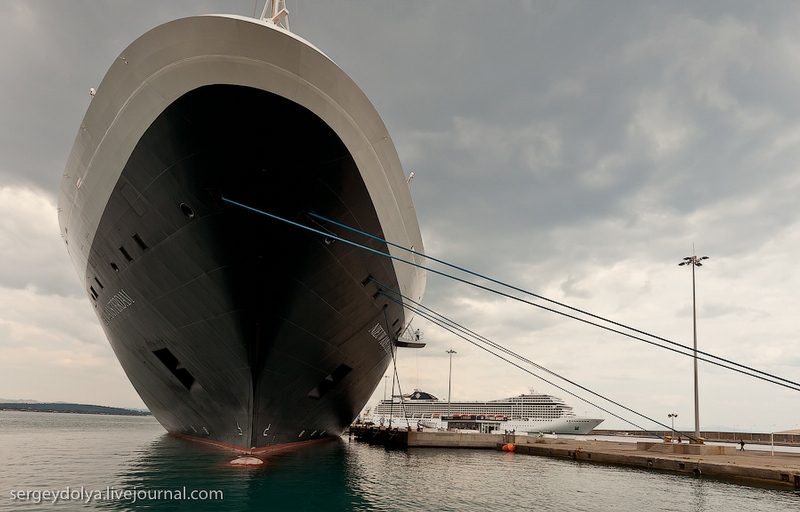
It took 18 months to construct the cruise liner which, in spite of such a great size and rich decor, cost the company just 445 million dollars being equal to the cost of the two Boeing 777. Today we'll open the sacred door "Staff only" and explore the engine shop, kitchen, dressing rooms, laundry, plumber's shop and warehouses which are usually hidden from regular passengers.
It is a dressing room where the requisite is kept. Every evening two performances are held by professional actors in a big hall of the vessel. No show is ever repeated during the same cruise.
The lower decks are separated by similar massive flat valves into 5 parts.
In case of emergency the valves get blocked and walking along the ship becomes impossible. One can only move inside the deck up and down. The doors are slowly closed by the captain who is at the bridge. If someone is stuck under the door he will be crushed as the automatic doors won't stop. According to the safety rules, the doors are always closed when the ship leaves a port or enters it.
The staff uniform is made right on board of the ship.
Every day tonnes of bed-linen and passengers' clothing are washed here. Huge aggregates installed at the construction time and mounted on the lower decks are used for the purpose of laundry.
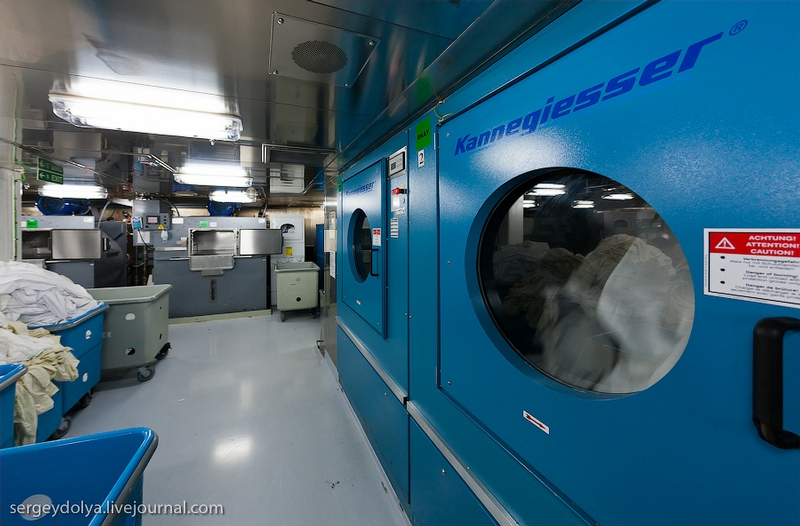

This is professional equipment for wet cleaning which is considered as an ecological process and causes no harm to the environment.
The staff consists of 798 sailors and officers. Besides, there are 1869 passengers aboard. A therapist, a traumatologist and a nurse are available. The staff uses a separate dining-room of its own. They enjoy playing games in the playstations in a separate playing room.
The garbage is collected and sent to a special room where it is sorted out manually and sold for further recycling. The obtained income is distributed among the sailors only.
Old clothing and books are donated to homeless people. The ship staff is always ready to help those who suffered from another world calamity. The workers who are best at garbage sorting are awarded additional days-off or taken to excursions by bus while at ports. They treat ecological issues seriously. One of the 4 chief officers (Environmental officer) is responsible for the issues.
Engine Control Room (ECR) is the heart of the ship.
At the time of the Titanic the captains had to practice the manual control of a leaver when they wanted the greasers to put more coal in the cup socket. Now the captain himself carries out all the operations just with the help of a computer located in the ECR.
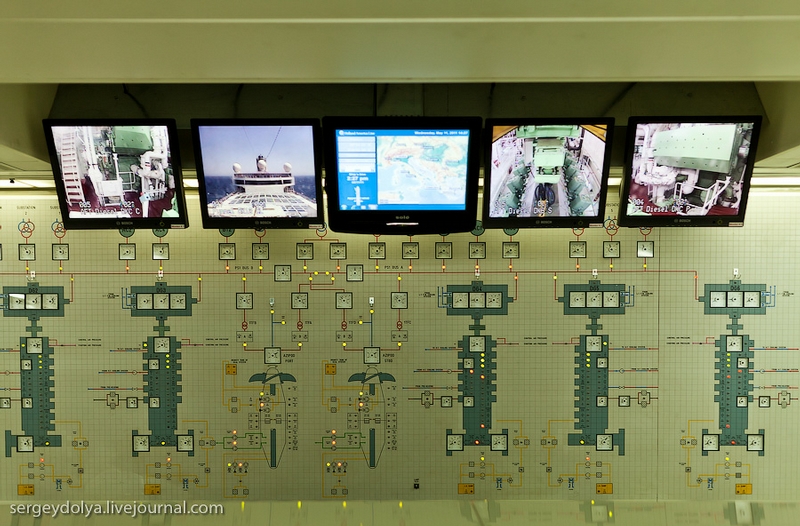
One person is enough to be aware of the situation on the ship.
The vessel can't reverse but has to turn 360 degrees to produce backward motion.
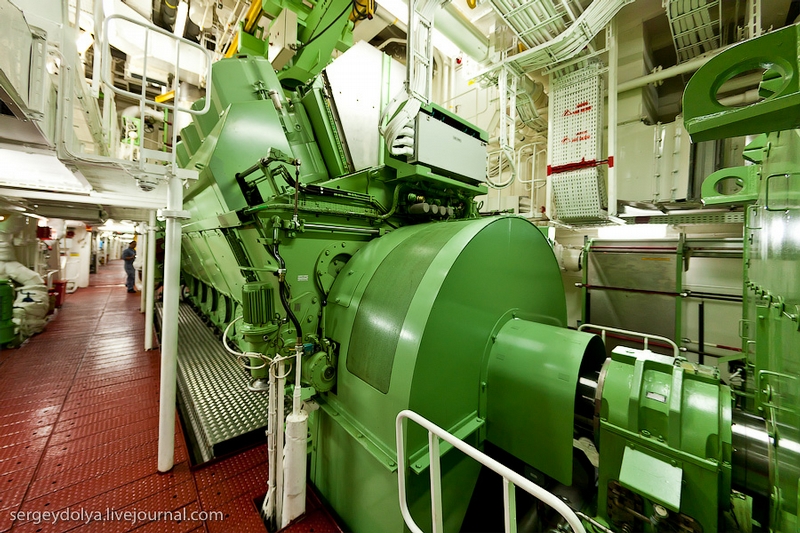
You can imagine the size of the ship looking at the V-shaped engines.
The engine shop is staffed with these appliances that are used to wash eyes in case of emergency.
Fresh food products are delivered to the board every 12 days. They can purchase some food at local ports though the major part of the products used are of US origin.
Bread is baked right on the ship. 334 employees out of 798 work in the kitchen.
You are welcome to look in the menu on the wall.
The most expensive dish called Surf and Turf which includes a piece of beef and a lobster costs the company 7000 dollars.
The captain room is next to the bridge.
When the ship enters a port or leaves it the captain is always at the bridge. He has a sea pilot next to him who can provide pieces of advice but never rules the liner.
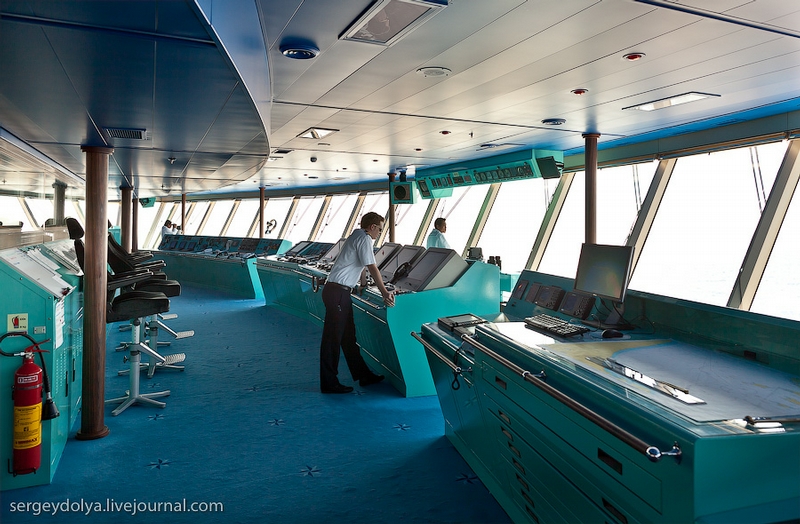
The glass is equipped with a special wiper which is never poured by rain and waves unlike the windscreen situated at the level of the 8th floor and can be always used to investigate the space ahead.
The principal navigation gadgets remain a paper map, a liner and a pencil the utility of which is never diminished even in the era of computers.
via sergeydolya
0 comments:
Post a Comment